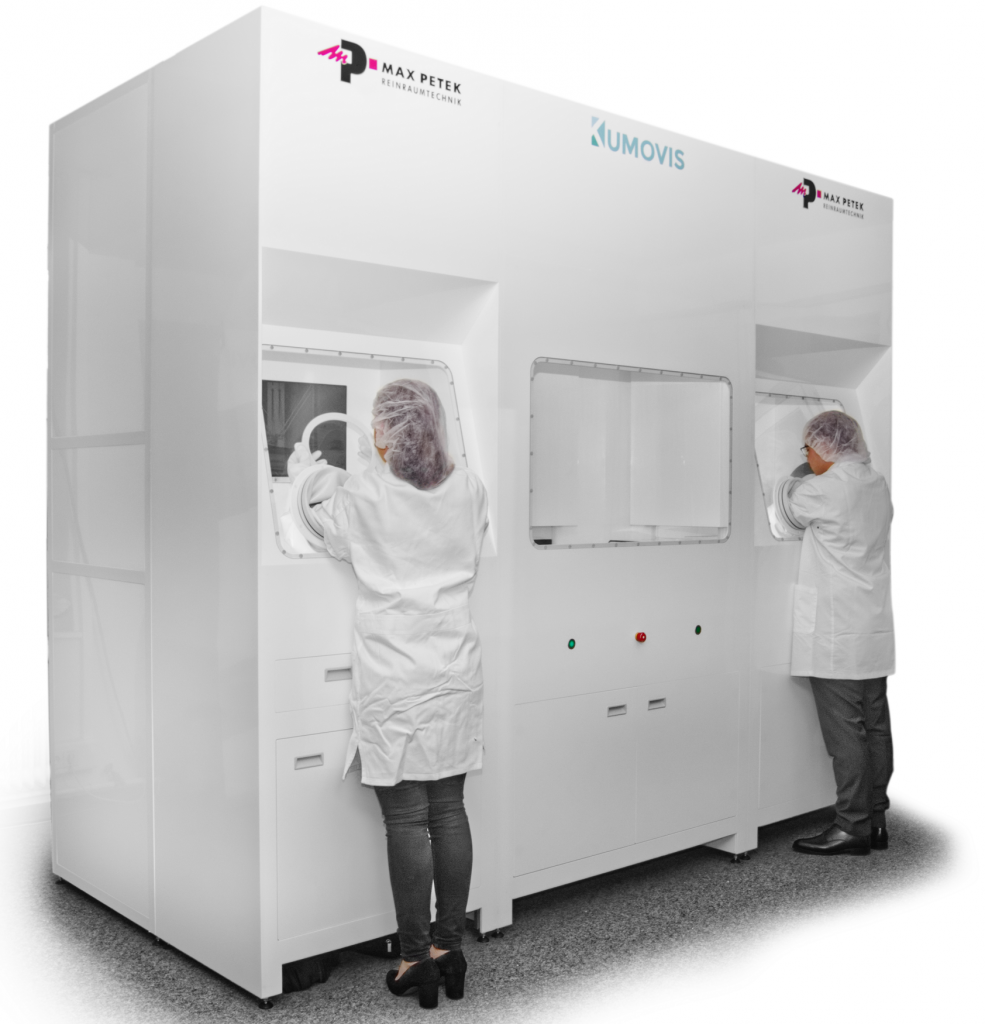
Last year at Formnext I spotted a young team standing around a 3D printer. This team was Kumovis. Kumovis launched a medical high-temperature FDM printer this year. This is a very interesting niche for them to be in PEEK is a very popular high-performance material that can be used for implants in the human body. Up and until now mostly powder bed fusion was used to print PEEK parts. Opening up PEEK for a new process would be very exciting indeed. Currently, there are around ten medical/biopinting companies on the market and about twenty high-temperature 3D printers. The Kumovis is the only one I know that is both medical and high temperature. I think that this is a brilliant niche for them to own. I interviewed the team behind Kumovis to find out what their plans are. Kumovis was founded by Stefan Fischer, Miriam Haerst, Alexander Henhammer, Stefan Leonhardt and Sebastian Pammer.
Alex Henhammer told 3DPrint.com, “the printer will be offered in two versions. The so-called R&D Line is tailored for Research & Development purposes and we will start commercializing in June 2019. Currently, we are producing the pre-series product, which we will test together with our pilot customers. The production line, compliant to medical manufacturing standards is currently in development. A first pilot project will start in 2019 and we are aiming for commercialization in 2020.”
Our goal is to provide a compact 3D-printing system with low investment costs and material waste for medical applications. Consequently, our main customer groups are medical device manufacturers and related suppliers. However, the R&D line can be used in a wide area of applications and addresses any industry or research needing a 3D-printer for high-performance polymers.
We designed the whole system meeting medical regulations right from the start. We focused on two main aspects: Thermal Processing: From our point of view, processing thermoplastics must start with a perfect control of the thermal process. To increase adjustment options, we do not only print in a heated, building chamber, but also integrated a laminar airstream that flows around the part homogeneously. An additional temperature controlled airflow can be used locally. Both airflows are adjustable between 20°C and 250°C. This helps preventing heat congestion and subsequently improves bad optical quality. In sum, this leads to minimized warping effects, an increased layer adhesion and good optical results. Medical production: To fulfill medical requirements, we integrated a cleanroom environment into our 3D-printing system. This excludes particle contamination in potential medical products such as patient specific implants. In combination with process monitoring tailored to medical regulations, we pursue a reproducible process for customized medical series production.

What kind of materials can it print with?
“Our current focus is on processing PEEK and other medical related polymers such as PEKK, PEI, PPSU or PA. In general, we provide an open system that offers great opportunities regarding the thermal properties to fabricate any thermoplastic material.”
With current generation, high-temperature 3D printers chamber thermal management is the single biggest problem. Lack of control over chamber temperature and changes in chamber temperature means that issues with crystallization or the general build quality of parts occur. Parts heat and cool unevenly which may lead to warped parts or misbuilds. Generally, all high-temperature printers could benefit from increased sensitivity to and better control over the entire chamber. That the team is additionally paying special attention to laminar flow could have interesting consequences as well. This seems like a solid approach for the team. If someone asked me what kind of printer I’d want to make, it would look a lot like this one.
Subscribe to Our Email Newsletter
Stay up-to-date on all the latest news from the 3D printing industry and receive information and offers from third party vendors.
You May Also Like
Wisconsin’s Evology Adds Digital Sheet Forming to Service Roster
Evology, a service bureau based in Wisconsin and specializing in serving strategic sectors like aerospace and defense, has added digital sheet forming (DSF) to its repertoire of manufacturing capabilities. Evology...
Boring Company Alum Score $9M for Advanced Composites Manufacturing
Layup Parts, a Huntington Beach, CA-based startup specializing in on-demand manufacturing of parts made from composites, has received $9 million in its latest financing round. Founders Fund, the VC firm...
Industrial Giant Ingersoll Rand Leads $19M Round Backing Inkbit’s AI-Driven 3D Printing
Inkbit, the Massachusetts-based original equipment manufacturer (OEM) of multi-material, AI-integrated 3D printers, has closed a $19 million financing round. Ingersoll Rand, a US giant in the industrial equipment sector, led...
3YOURMIND & Nigerian Oilfield Services Firm RusselSmith Team Up on 3D Printed Part Inventory
3YOURMIND, the German and U.S. software services provider specializing in digital inventory platforms for additive manufacturing (AM), has partnered with Nigerian oilfield services firm RusselSmith to digitize spare part files...
































